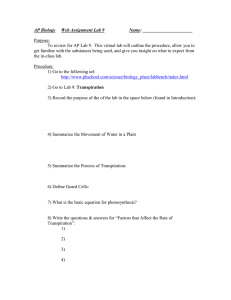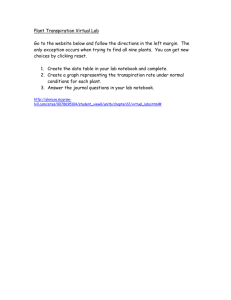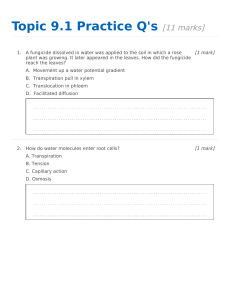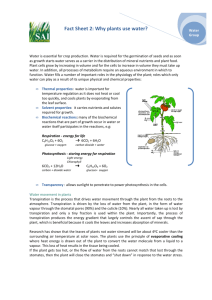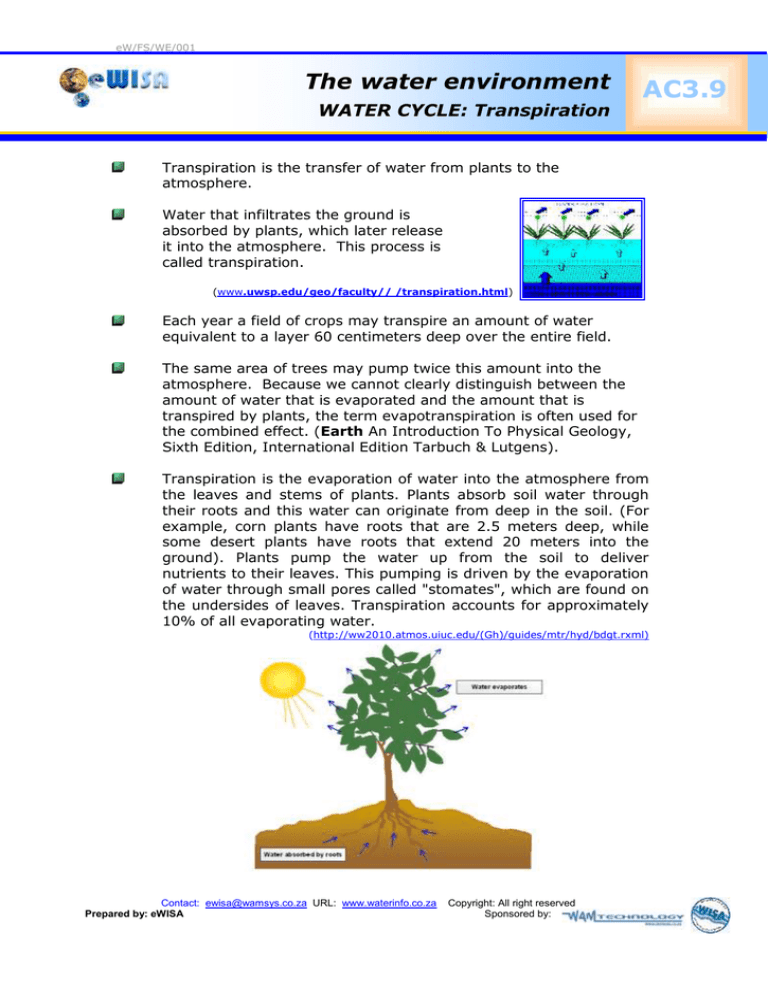
eW/FS/WE/001
The water environment
WATER CYCLE: Transpiration
AC3.9
Transpiration is the transfer of water from plants to the
atmosphere.
Water that infiltrates the ground is
absorbed by plants, which later release
it into the atmosphere. This process is
called transpiration.
(www.uwsp.edu/geo/faculty// /transpiration.html)
Each year a field of crops may transpire an amount of water
equivalent to a layer 60 centimeters deep over the entire field.
The same area of trees may pump twice this amount into the
atmosphere. Because we cannot clearly distinguish between the
amount of water that is evaporated and the amount that is
transpired by plants, the term evapotranspiration is often used for
the combined effect. (Earth An Introduction To Physical Geology,
Sixth Edition, International Edition Tarbuch & Lutgens).
Transpiration is the evaporation of water into the atmosphere from
the leaves and stems of plants. Plants absorb soil water through
their roots and this water can originate from deep in the soil. (For
example, corn plants have roots that are 2.5 meters deep, while
some desert plants have roots that extend 20 meters into the
ground). Plants pump the water up from the soil to deliver
nutrients to their leaves. This pumping is driven by the evaporation
of water through small pores called "stomates", which are found on
the undersides of leaves. Transpiration accounts for approximately
10% of all evaporating water.
(http://ww2010.atmos.uiuc.edu/(Gh)/guides/mtr/hyd/bdgt.rxml)
Contact: ewisa@wamsys.co.za URL: www.waterinfo.co.za
Prepared by: eWISA
Copyright: All right reserved
Sponsored by:

